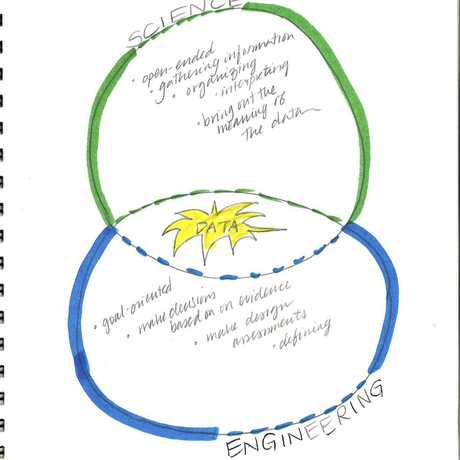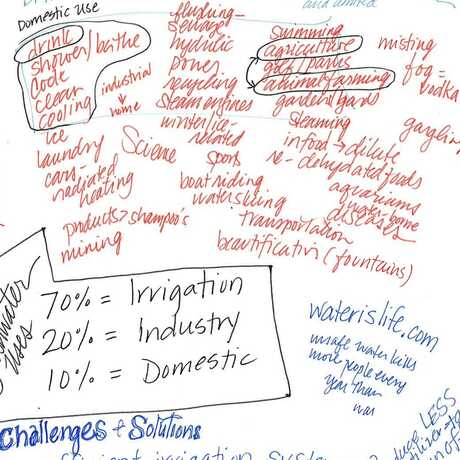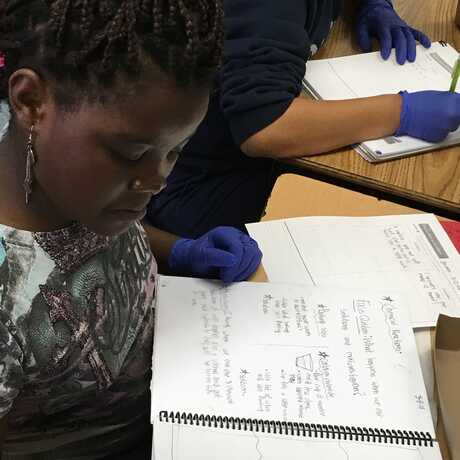
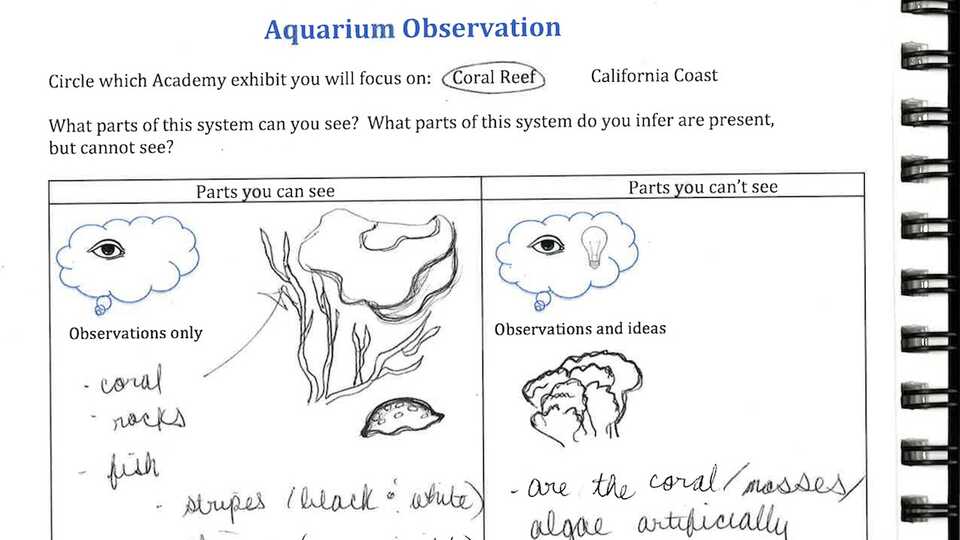
How can notebooks help students learn actively during field trips? These scaffolds can help focus students' attention and lead to deeper learning. Try one of these strategies on your next visit to your school garden, local aquarium, or park!
About This Guide
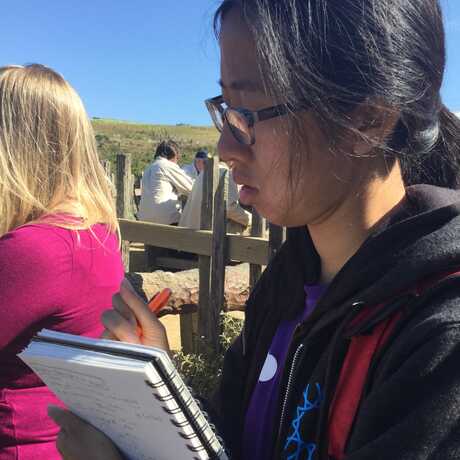
Below, you’ll find guidance related to using the science notebook during a field trip, including:
- Creating schematic road maps
- Using visible/invisible t-charts
- Reflecting with peers through "Give one, Get one"
Because we know teachers appreciate seeing the results of using these strategies, we've also created an example gallery containing student work.
Schematic Roadmaps
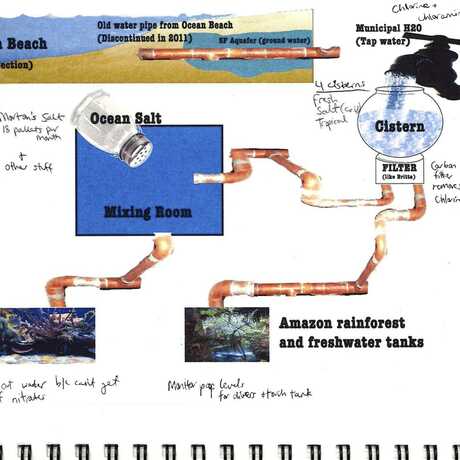
If you know ahead of time what students are going to see, you can create a basic diagram to orient them during the field trip. For instance, if you are taking students on a trip behind the scenes in an aquarium, you can prepare a simplified diagram of the water system so that students have a road map to follow as the tour progresses. This map can also focus students' attention on any landmarks that are important to your learning goals. Leave enough room for students to annotate or add to the map.
Visible/Invisible T-Charts
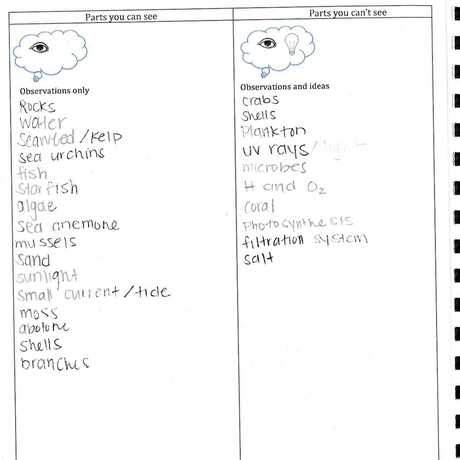
When students are observing a system (such as a garden, a school, an ecosystem, a water treatment plant, etc.), there are almost always parts they can see, and parts that they can’t. Invite students to create a T-chart in their notebook with one column for “parts you can see” and another for “parts you can’t see but can infer are there.” For instance, if students are observing a light bulb, they can see the light but they can't see the electricity or the electrical cables in the wall. Visible/Invisible T-charts are particularly useful in a field trip setting in order to focus students’ observations. Students can also share their observations with each other, through the next exercise: "Give One, Get One."
Give One, Get One
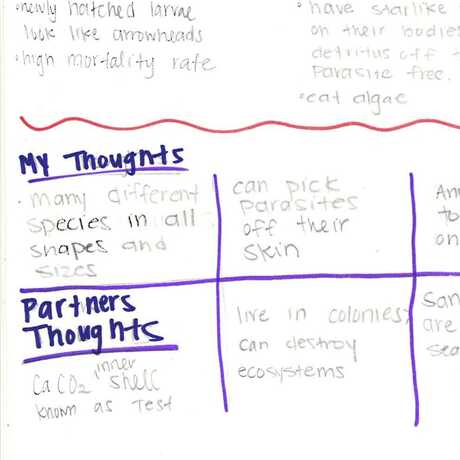
Sometimes field trips can lead to information overload. This strategy allows students to narrow their focus and hold on to just a few new ideas. Instruct students to make a table in their notebook with 2 rows and 3 (or more) columns. They can label the top row “my observations,” and the bottom row, “my partner's observations.”
When they are observing on a field trip (or listening to a tour guide) they will fill in the top row with three observations or new ideas that stand out to them. After the activity is over, students can then share their observations with one or several partners. Each time they hear a partner’s idea, they write it down in the bottom row.
When the activity is finished, on their notebook page they will have recorded three of their own observations and three observations from peers.
How To Make It Happen
- Schematic roadmaps take some planning and knowledge of what students might see on a field trip. Checking in with the organization and/or their literature should give a basic blueprint.
- Schematic roadmaps should be simple, and leave plenty of room for student thought.
- "Give one, Get one" is applicable in many contexts, so it’s good to familiarize students with the protocol before they use it off-site.
Notes from the Classroom
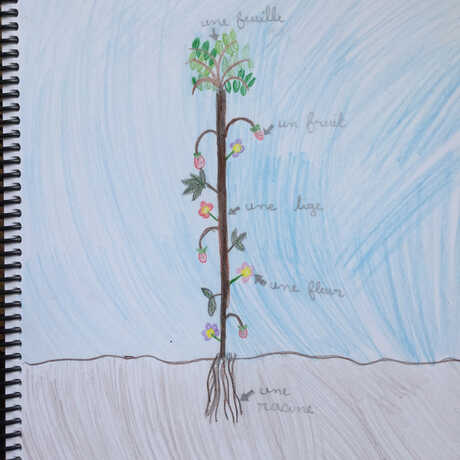
Maryann was teaching a unit to her Kindergarten class on plants and their structures. Before studying plants up close, she gave students simple diagrams of the basic plant parts: roots, leaves, and stems.
She then asked the students to draw what they thought the plants looked like underground, taking care to show how long the roots were and how big and deep the root systems went, as they had some prior knowledge of the structure. She also asked them to show where the water came from.
When the time came to bring their notes, drawings, and pre-thinking to the school garden, they already had an idea of what they were going to see, which made the garden teacher’s lesson land much more smoothly.

Science Notebook Corner
Learn how notebooks can help your students think and act like scientists.
